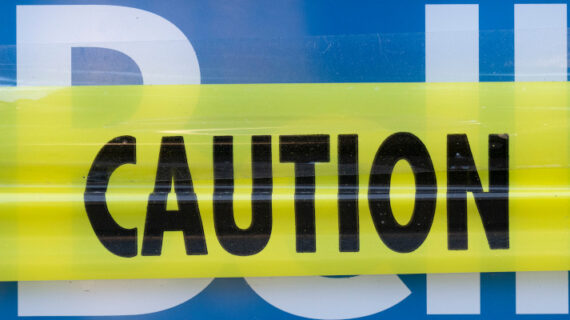It is well known that a “caretaker” government operates during an election campaign, with a focus on routine proceedings, urgent matters and all-party collaboration on important issues that arise.
But what happens after election day, in that uncertain period before a new cabinet is sworn in and before Parliament is recalled?
At some point, between election day and the resumption of Parliament, the government shifts out of caretaker mode and into normal day-to-day business.
The precise moment is often a mystery. It’s not publicly announced and, in minority Parliaments when the incumbent wins, it’s often based on a subjective test of whether or not the governing party believes it can gain the confidence of the House of Commons.
In response to The Hub’s questions to the Privy Council Office about when and how the caretaker mode was lifted in the current government, media relations officials said only that the PCO “works closely with departments to provide advice and guidance on issues relating to the caretaker convention.” Wednesday’s major announcement on vaccine mandates for public servants and air and rail travellers implies heavily that the government is operating at full capacity now, though.
According to scholars, the government must clear one of two hurdles to shift out of caretaker mode after an election, with one being obvious and objective and the other being more subjective.
The most obvious sign is when a new cabinet is sworn in, which means the government is ready to start governing without any caretaker restrictions. We’re still waiting on Prime Minister Justin Trudeau to appoint his new ministers, but he already has a cabinet assembled from the previous government.
The second test is less obvious and far more subjective. The Privy Council Office advises that a government can shift out of caretaker mode “when an election result returning an incumbent government is clear.” This is the guideline that matters now.
After the September election, which gave the Liberals a plurality of seats, it looks like the government has cleared the second test, but “you could, looking at the language of the guidance, say no,” said Philippe Lagassé, an associate professor at Carleton University, who researches the Westminster system of government.
That means pundits, scholars and opposition MPs are free to quarrel with the idea that we just witnessed a “clear” victory for Trudeau, but the discussion is mostly academic.
The caretaker guidelines are a Parliamentary practice, not even rising to the level of a convention and, in the end, it is “ultimately dependent on the prime minister’s call,” said Lagassé.
Is there a better way?
It might seem odd to leave a subjective decision like this in the hands of the prime minister. He may, after all, be biased.
Trudeau has been vocal recently about winning a “clear mandate” in the election, despite some quibbles from critics and pundits.
In the U.K., most of the uncertainty is taken out of this transition period by almost immediately recalling Parliament. That means minority governments have to sort out plans for maintaining the confidence of the House and the make-up of the new cabinet within a week or two of election day.
The practice in the U.K. is that Parliament will have its first meeting in under 12 days, which was a guideline adopted in 2010. Before that, Parliament was convened on the Wednesday following the election. In Australia, Parliament has to reconvene within 30 days and in New Zealand, the government has six weeks to bring Parliament back.
This is a stark contrast to the practice in Canada. Paul Martin’s Liberal minority government took nearly 100 days from election day to throne speech in 2004. In 1979, Joe Clark’s Progressive Conservative government took a whopping 141 days to get a throne speech together after election day.
“It says something about our attitude towards Parliament that it’s a bit of an afterthought. You’re going to have the swearing-in of cabinet, and then after that, we’ll get around to reopening Parliament,” said Lagassé.
If Canadians grew tired of these laggard governments, they could follow the example of the U.K. system and codify some expectations for when Parliament should be recalled in a cabinet manual. In 2011, then-Prime Minister David Cameron published the U.K.’s current two-week rule in that document making it harder for subsequent governments to flout the guideline.
What happens to ministers?
One of the quirks of Canada’s parliamentary system is that defeated members of Parliament can still hold cabinet spots after the election. In the September election, four Liberal cabinet ministers lost their seats, with three being defeated and one resigning.
And although Infrastructure Minister Catherine McKenna was recently tweeting about how she’s not sad to be out of politics after retiring as a member of Parliament, she is actually still in charge of her department until Trudeau appoints a new minister.
Maryam Monsef, the minister for women and gender equality and rural economic development, Bernadette Jordan, the minister of fisheries and Deb Schulte, the minister for seniors, are all in similar spots after losing their seats in the election.
Lagassé said there’s a few options for the government in this case. One is that the unelected minister continues doing the job as usual until the new minister comes in.
“Individual ministers retain their authorities, even if they will not be returning to the House of Commons, until a new minister is sworn into their position,” said Stéphane Shank, a media relations officer in the Privy Council Office. “By convention, a returning government continues to exercise a degree of restraint, to the extent possible, until a new/revised ministerial team is sworn-in.”
Another option involves transferring that power.
“The deputy minister can act in the minister’s stead in almost all matters, so day-to-day kind of functions of the department are not really affected. And similarly, in a pinch, you can even pass regulations transferring functions to another minister as necessary,” said Lagassé.
When should we expect a speech from the throne?
After the 2019 election, in which Trudeau’s majority government was demoted to a minority one, it took 46 days from election day until the throne speech.
The average since 1968 is 69 days for a government to recall Parliament, but it’s possible that the level of urgency will be higher this time.
Since the 2021 election occurred in the midst of a global crisis, the best one to compare it to could be the 2008 federal election: where an incumbent minority government was re-elected with another minority parliament in the midst of the 2008 global financial crisis.
It took Stephen Harper’s re-elected Conservative minority government 36 days from election day to the day of the throne speech, which is one of the quickest transitions in the last 50 years.




